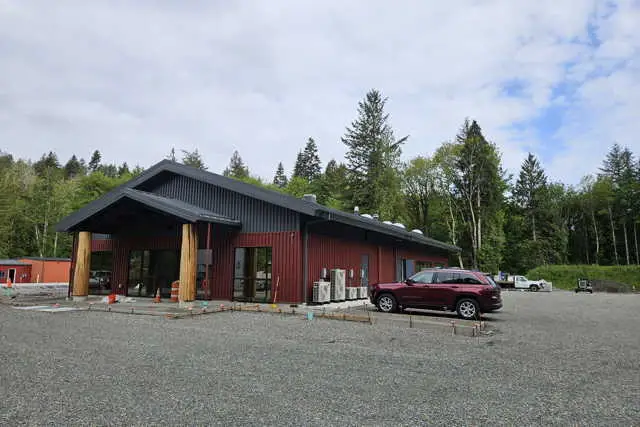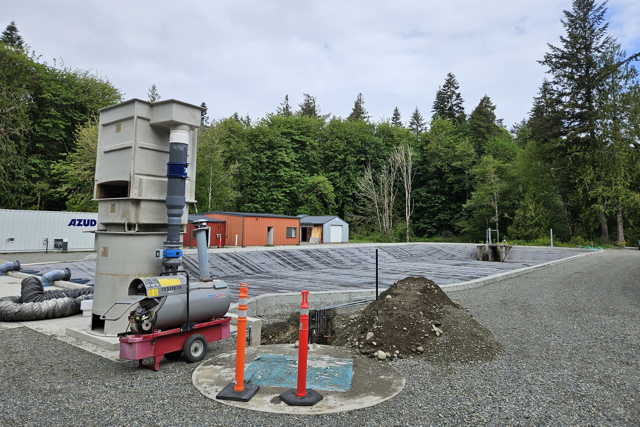Kalama Creek Hatchery Modernization
Nisqually Indian Tribe,
Nisqually, Washington
Consulting Role
- Civil Engineering
- Structural Engineering
- Mechanical Engineering
- Hydraulic Analysis
- Cost estimating
- Construction Support
Project Members
- Eric Orton, P.E
- Jason Hill, P.E.
- Larry Pauls, P.E.
- Andy Blake
Key Elements
- PRAS System
- Adult Holding
- Hatchery Building
- Early Rearing
- Administration Space
- Asphalt Lining
- Avian Predation Prevention
- Pollution Abatement
- Incubation
- Circular Tanks

Upper Site:
Accommodates expansion of Chinook program, new hatchery building, new surface water filtration system, pollution abatement systems, and utilize PRAS on the existing asphalt pond to increase amount of water for rearing. Pond recirculation rate capable of recirculating up to 50%.
Lower Site:
Will accommodate expansion of Chinook program, provided shelter for spawning, and utilize PRAS to increase amount of water for rearing.
Circular tank facility is housed in a canvas arched shelter and contains 8-20 ft diameter dual drain tanks, and a PRAS system capable of recirculating up to 60% of the water leaving the facility.

The Kalama Creek Hatchery was modernized to create more rearing space for the expansion of the Chinook program. To achieve the increase in production and subsequent increase in water demand the incorporation of a Partial Recirculating Aquaculture System (PRAS) was used in addition to water reuse. Kalama Creek Hatchery is split into an upper site and lower site.
Upper Site: The modernization at the Upper Site included the addition of a new hatchery building, which included facilities for chilled incubation and early rearing of Chinook salmon, additional office, and meeting space for hatchery staff. In addition to the hatchery building the design included modification to the existing pump house building, head tank, pollution abatement system, asphalt pond, avian predation system, and incubation building for Coho.
The existing asphalt pond will be retrofitted with a 50 percent PRAS to increase oxygen and water flow through the pond.
Lower Site: The modernization of the Lower Site included the upgrade of the existing adult holding building, pollution abatement system, installation of a new diesel backup generator, and new circular tank building. The new tank farm in the building is supplied by a new constant- pressure pumped surface water system, to supply eight 20-foot-diameter fiberglass-reinforced plastic (FRP) dual drain tanks, and a 60 percent PRAS setup. The PRAS consists of mechanical filtration to 30 microns, pump recirculation, gas stabilization towers, and UV disinfection. Any water that is not recirculated could be reused in the adult pond or discharged directly from the site.
